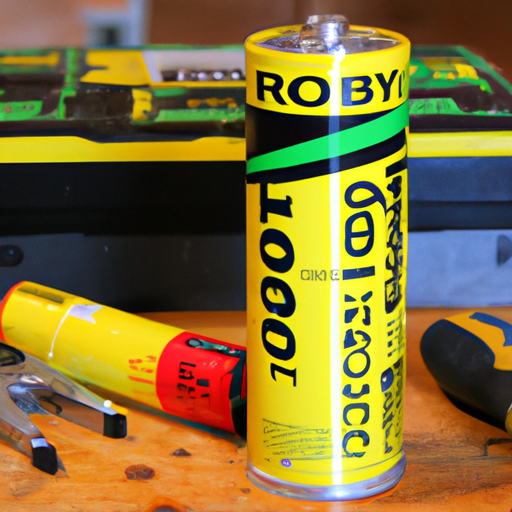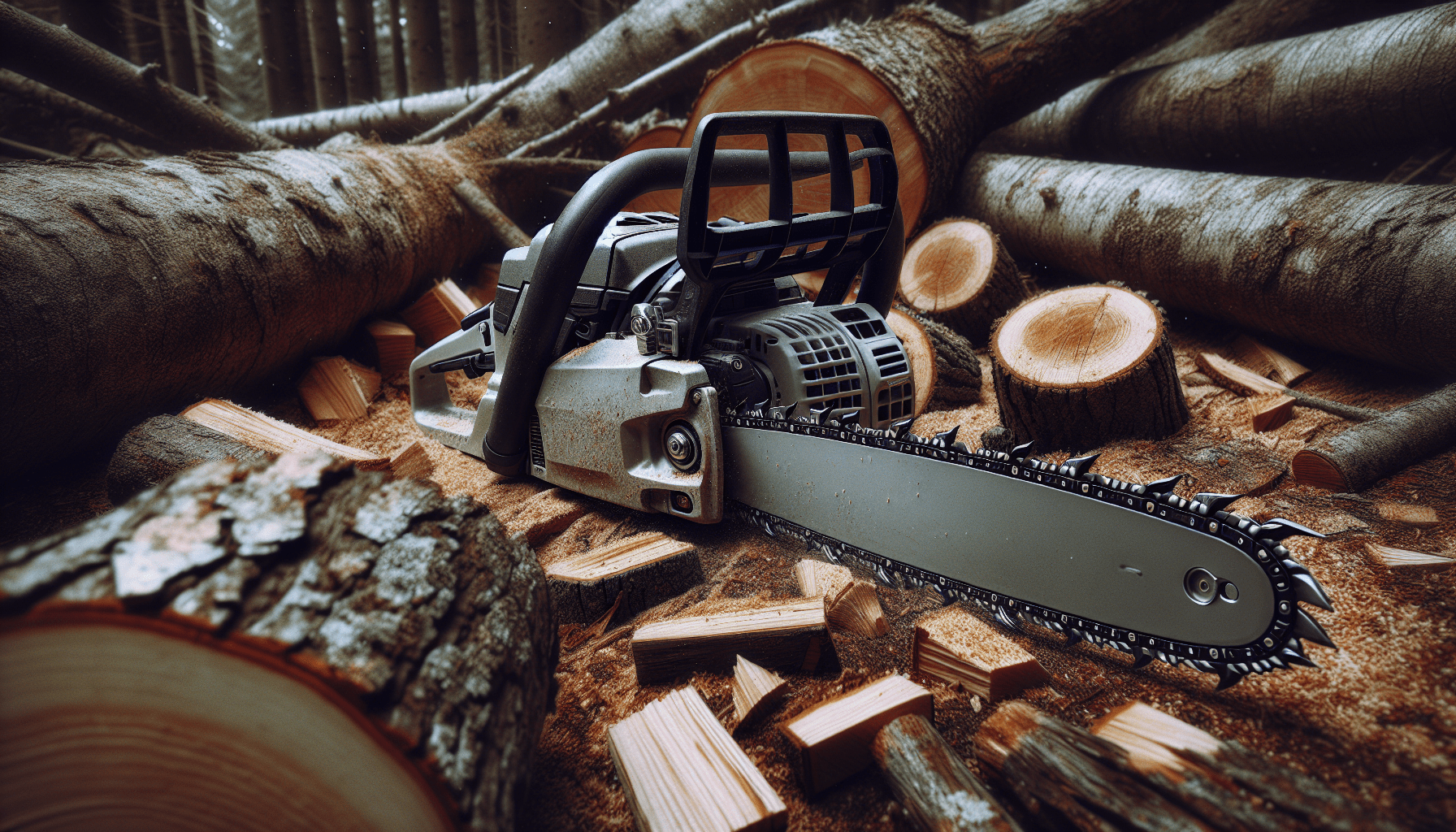So, you’re eager to get to work on your DIY project, but you hit a roadblock – your trusty Ryobi 18V battery is not charging. Don’t worry! In this article, we’ll guide you through a few troubleshooting steps to help you identify and fix the issue. From checking the charger, examining the battery contacts, to potentially resetting the battery, we’ll cover it all. By the end, you’ll be back to tackling your projects with a fully charged battery in hand. Let’s get started!
1. Check the Charger
When your Ryobi 18V battery is not charging, the first thing you should check is the charger itself. There are a few things to consider in this step.
1.1. Ensure Proper Connection
Make sure that the charger is securely plugged into a power source. Sometimes, the charger may not be making a proper connection, which can prevent the battery from charging. Double-check that the charger is plugged in all the way and that there are no loose connections.
1.2. Inspect the Charging Cable
Examine the charging cable for any signs of damage. Look for frayed wires or exposed metal that may indicate a problem. If you find any damage, it is important to replace the charging cable to ensure safe and effective charging.
1.3. Test with Another Charger
To rule out the possibility of a faulty charger, try using a different charger that is compatible with your Ryobi 18V battery. If the battery charges successfully with the alternative charger, it indicates that the original charger may be the issue. Consider replacing the charger if necessary.
2. Examine the Battery
If the charger appears to be working fine, the next step is to examine the battery itself. A few checks and cleaning procedures can help determine if the battery is causing the charging issue.
2.1. Remove and Reinsert the Battery
Sometimes, simply removing and reinserting the battery can fix charging problems. Remove the battery from the tool or charger and wait for a few minutes before reinserting it. This process can reset the battery’s internal circuits, potentially resolving any minor issues.
2.2. Clean the Battery Terminals
The battery terminals, located on the bottom of the battery, can accumulate dirt, dust, or corrosion over time. Use a clean, dry cloth to gently wipe the terminals and remove any debris. Ensuring the terminals are clean can improve the connection between the battery and the charger.
2.3. Check the Battery Age
Consider the age of the battery. Lithium-ion batteries, like the ones used in Ryobi 18V tools, have a limited lifespan. If the battery is several years old or has been heavily used, it may not hold a charge as well as it used to. In such cases, replacing the battery may be necessary.
2.4. Measure the Voltage
If you have a multimeter or a voltage tester, you can measure the voltage of the battery to determine its health. A fully charged Ryobi 18V battery should read around 18 volts. If the voltage is significantly lower, it could indicate a problem with the battery’s capacity or overall condition.
3. Verify the Power Source
Before assuming the battery is the issue, it is essential to check the power source. The following steps will help narrow down the potential causes.
3.1. Check the Outlet
Ensure that the power outlet you are using is functional. Plug in a different electronic device or use a voltage tester to confirm that the outlet is providing power. If the outlet is not working, try a different one.
3.2. Test with Another Power Source
To eliminate the possibility of a faulty power source, try charging the battery using a different outlet or power source. It is possible that the original power source is not compatible with the charger or is providing insufficient power.
4. Inspect for Damage
Visual inspection can help identify any physical or water damage that may be preventing the battery from charging properly.
4.1. Look for Physical Damage
Inspect the battery for any signs of physical damage, such as cracks, dents, or bulges. If you notice any damage, it is crucial to discontinue use and replace the battery immediately. Damaged batteries can pose safety hazards and may not charge or perform as intended.
4.2. Check for Water Damage
Water damage can also interfere with a battery’s charging capabilities. If the battery has been exposed to water or other liquids, it is essential to avoid using it and consult a professional for further advice. Water damage can lead to irreversible damage and potential safety risks.
4.3. Examine the Battery Contacts
Inspect the battery contacts for any signs of dirt, debris, or corrosion. These contacts, located on both the battery and the tool, facilitate the transfer of power. Use a clean, dry cloth or a soft brush to gently clean the contacts and ensure a clean connection between the battery and the tool or charger.
5. Reset the Battery
Performing a battery reset can potentially resolve charging issues by recalibrating the battery’s internal systems.
5.1. Discharge the Battery Fully
Use the battery until it is completely drained or nearly empty. This process helps reset the battery’s internal circuitry and can potentially fix minor issues.
5.2. Charge the Battery Slowly
After fully discharging the battery, recharge it slowly. Use a charger with a low amp setting or a trickle charger. Slow charging allows the battery to regain its capacity and may help resolve charging problems.
5.3. Reset the Battery Management System
For some Ryobi batteries, there may be a built-in Battery Management System (BMS) that can be reset to fix charging issues. Consult your battery’s user manual or the manufacturer’s website for specific instructions on how to reset the BMS, if applicable.
6. Check for Firmware Updates
Firmware updates can enhance the compatibility and performance of your Ryobi 18V battery and charger. Make sure your battery is up to date by following these steps.
6.1. Visit the Manufacturer’s Website
Visit the official Ryobi website or the specific product page for your battery model. Look for the “Support” or “Downloads” section, where you may find firmware updates and related resources.
6.2. Follow Firmware Update Instructions
If there are available firmware updates, carefully read and follow the instructions provided by the manufacturer. Firmware updates typically require connecting your battery or charger to a computer or using a specific tool provided by the manufacturer.
7. Seek Professional Help
If you have tried all the previous steps and your Ryobi 18V battery is still not charging, it may be time to seek help from professionals.
7.1. Contact Ryobi Customer Support
Reach out to Ryobi’s customer support team by visiting their website or contacting them via phone or email. Explain the issue you are experiencing and provide any relevant details, such as the model number and age of the battery. They will be able to guide you further and provide expert advice.
7.2. Consult a Certified Ryobi Service Center
If directed by customer support or if further assistance is required, locate a certified Ryobi service center near you. Certified service centers have trained technicians who specialize in Ryobi products and can diagnose and repair battery issues professionally.
8. Consider Battery Replacement
If your Ryobi 18V battery is no longer under warranty or if it is determined that the battery is beyond repair, it may be necessary to consider replacing it.
8.1. Evaluate Battery Cost
Consider the cost of a new battery compared to potential repair expenses. While purchasing a new battery may seem like an additional expense, it may be more cost-effective in the long run, especially if the existing battery is older or damaged.
8.2. Assess Battery Lifespan
Take into account the battery’s lifespan and overall performance. If the battery is nearing the end of its usable life and is not holding a charge effectively, investing in a new battery can ensure optimal performance and productivity.
9. Follow Proper Storage Guidelines
Proper battery storage is crucial for maintaining its overall health and longevity. Follow these guidelines to ensure your Ryobi 18V battery stays in optimal condition when not in use.
9.1. Store in a Cool, Dry Place
Store your battery in a cool and dry environment. Extreme temperatures, humidity, and exposure to sunlight can accelerate battery degradation and reduce its overall lifespan. Consider using a dedicated storage case or shelf to protect your battery.
9.2. Avoid Extreme Temperatures
Avoid storing the battery in places with extremely low or high temperatures. Extreme heat or cold can damage the battery cells and impact their performance. Optimal storage temperatures typically range between 50°F to 77°F (10°C to 25°C).
9.3. Charge Regularly
Even if you are not using your Ryobi 18V battery frequently, it is essential to charge it regularly. Lithium-ion batteries perform best when kept at a moderate charge level. Aim to recharge the battery fully at least once every few months to maintain its capacity and prevent degradation.
10. Preventative Maintenance Tips
Taking proactive measures can significantly prolong the life and functionality of your Ryobi 18V battery. Consider these maintenance tips to ensure optimal performance.
10.1. Avoid Overcharging
Avoid leaving the battery connected to the charger for extended periods once it reaches full charge. Overcharging can lead to heat buildup and ultimately reduce the battery’s lifespan. Disconnect the battery from the charger once it is fully charged or has reached its recommended charging time.
10.2. Keep Battery Contacts Clean
Regularly check and clean the battery contacts. Use a clean cloth or a soft brush to remove any dirt, debris, or corrosion that may accumulate over time. Maintaining clean contacts ensures a proper connection and optimal charging performance.
10.3. Do Not Drop or Crush the Battery
Handle your Ryobi 18V battery with care and avoid dropping or crushing it. Physical damage can affect the battery’s internal components and compromise its ability to hold a charge. Treat the battery as a delicate piece of equipment and store it securely when not in use.
By following these steps and practicing proper maintenance, you can troubleshoot charging issues with your Ryobi 18V battery and maximize its lifespan and performance. Remember to always prioritize safety and consult professionals when needed.


